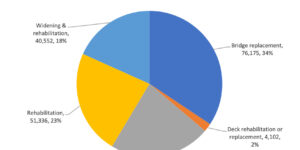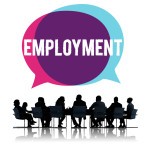Career experience in deep tech and investing in insurance industry innovation give Jonathan Kalman a unique perspective on how artificial intelligence will change the P/C insurance industry.
Executive Summary
Leadership happens at all levels of the organization. How will insurers infuse AI leadership across the entire enterprise? P/C industry participants shared their thoughts with CM Guest Editor Mike Fitzgerald.Michael (Fitz) Fitzgerald, Insurance Industry Advisor for SAS Institute Inc., served as guest editor for this article and others featured in CM’s Q1-2024 magazine, “Leading the AI-Powered Insurer.“
The impacts of AI will be felt in “every single function”—and talent management is no exception, Kalman, a founding partner of Eos Venture Partners, told CM Guest Editor Michael (Fitz) Fitzgerald during a recent interview.
“AI will impact the talent war in [the] industry. You will see a tremendous upskilling of the workforce in insurance where people will be augmenting their work with a copilot, which will allow faster maturation of skills,” said Kalman (referring broadly to assistive technology rather than Microsoft Copilot, specifically). “It will allow different skills transfer. And it will allow more efficient workloads, so you can have less people doing administrative tasks.”
“But this is a point which is really lost on many of the people we talk [with] who are fearful of it impacting the jobs. It is actually going to require more people to be discerning and discriminating in their ability to understand the [AI] output,” he said. Explaining why, Kalman noted that the goal of AI technology is to “always give you an answer. That’s not like a person who can get stuck, who says, ‘Hey, I’m stuck. I know I’m stuck. This number doesn’t look right. I need help.’ The computer never says that.”
“That human discernment of understanding and looking at the information is important,” he said.
Yes, the acceleration of AI applications also means “a great opportunity for our country to continue its focus on STEM. Those skills will be more in demand as we go through. But at the same time, it’s not just STEM. It’s also what is taught in often more humanities-based courses, which is critical thinking,” Kalman stressed.
“Sometimes it’s easier to teach someone who is good at critical thinking how to use a copilot than it is to teach somebody who is an engineer or leading mathematician how to become a critical thinker,” he said.
Nonetheless, Bruce Baty, a partner with the law firm Norton Rose Fulbright U.S. LLP, who has decades of experience assisting insurers on regulatory matters, believes insurers will need AI specialists, and he sees well-positioned insurers casting a wide net to snag them. “They don’t have to be insurance people. I work with clients all the time that bring in the head of marketing for Staples or some retail operation, and one of the first things we do is go through training on insurance advertising principles and how that is so different than anything they’ve done in the past. But they’re smart people and they get it. They can adapt their experience to the insurance industry.”
“That’s what we’re going to have to do with AI specialists coming in,” he said, suggesting that training will go beyond claims and underwriting and production. The new talent will need to appreciate how to build AI models that are fully compliant with insurance laws and regulations.
Kalman sees a path forward in expanding the skill sets of career insurance professionals to add knowledge of AI to the mix. “The wonderful thing about this new world we’re living in is that there is so much education about it. Any employee can be upskilling. You can take a course online—many free. Many universities offer free courses.”
Putting himself in the shoes of an insurance carrier executive, Kalman said, “The first thing I would do is I would say every employee gets a $500 stipend to take a course.”
“And here is what I didn’t say: Let’s go spend $10 million and figure out how to build a data lake,” Kalman added. “Educate your people. That’s your biggest impact [and] differentiation,” he said, suggesting with that education about AI tools, ideas about how the firm can leverage the technology to solve its problems will blossom internally.
“How do you light up your workforce to do this?” he asked, suggesting that executives who seek to answer this will move ahead of the rest.
A CEO’s View
Hamilton Insurance Chief Executive Officer Pina Albo is among the leaders who believes that the best ideas about how to leverage AI will come from within. In 2019, in an article Albo posted on LinkedIn to mark the first anniversary of her role as CEO, she wrote, “The role of people versus the role of technology is not a binary question. Few would argue that machines have not and will not continue to replace human labor. The best-case scenario is for them to replace tasks, not work in the sense of the net sum of jobs.”
“Modern organizations face the challenge of elegantly integrating people, processes, and technologies with desired outcomes.”
Five years later, she talked about a leader’s role in meeting that challenge.
“It was important to me to have somebody responsible for technology at the executive table in the company,” she said, referring to the fact that one of her first actions as CEO was to hire a chief technology officer. “As a result of that, technology is a standing agenda item on our weekly executive calls. We’re always talking about what investments we should make. What is going to help us drive it forward?”
“The investments that we make are informed by our people,” she said. “We don’t think top-down: Wouldn’t it be great to do this? We think about what do our employees who are closest to the business, who are transacting every day, what are they telling us that they need.” Then Hamilton executives examine the “list of to-dos” compiled from listening to the workforce and decide how to prioritize those items in order to make their lives easier.
“It’s not some kind of blue box thinking. It is specific to the business. It’s specific to the needs. It’s making them better at what they do.”
At least one idea came directly from the CTO to Albo—a tool derived from Open AI that extracts key information from email submissions and populates an underwriting workbench. “That was our chief technology officer actually putting me in the room and saying, let me show you something. He actually took me through what ChatGPT can do to an insurance submission that we get at Lloyd’s,” she said, noting that the CTO expressed a desire to pilot the tool.
“Sometimes we have to be willing to place a bet,” Albo said, explaining her decision to let the pilot go forward. “That is something that I have to do—that a leadership team has to do, which maybe didn’t come from our workforce. But we think there’s something there” and we act, she said.
Leaders “have to be willing both to listen to their people and give them the tools that they need to be better. And then when technology comes, [employees] are embracing it because it’s helping them.”
Then, at the same time, leaders have to be thinking about what else is possible. “What dimensions are [employees] not thinking about because they’re just too much in their weeds [but] that we think might be a game-changer for the future? What bet are we going to place?”
Asked specifically to describe professional development programs that assist Hamilton in delivering on two business imperatives of the specialty insurer and reinsurer—empowering the business with technology and being a magnet for talent—Albo said that Hamilton enables attendance in various continuous education courses, which increasingly include technology-enhanced programs.
What about change management programs?
“Because a lot of our technology is response to what we’re hearing [from the workforce], that change management process is a lot easier to implement—because it’s not a ‘top-down we-want-you-to-do-this [charge]. It’s more [that] we listened…We involve our underwriters in the process” of building technology, she said.
As an example, she noted that Hamilton is currently starting to build a workbench for its newest business, Hamilton Select, a U.S. E&S operation. “Who’s involved in the process? Our chief underwriting officer; our heads of business lines. They’re involved because this is what they’re going to use every day,” Albo reported.





















 Insurance Industry Labor Market Remains Stable: Report
Insurance Industry Labor Market Remains Stable: Report  Allstate Thinks Outside the Cubicle With Flexible Workspaces
Allstate Thinks Outside the Cubicle With Flexible Workspaces  Bumps Ahead as Disruption Drives Changes in Auto Insurance
Bumps Ahead as Disruption Drives Changes in Auto Insurance  Florida Home Sales Decline Amid Hurricane Recovery, Surging HOA and Insurance Costs
Florida Home Sales Decline Amid Hurricane Recovery, Surging HOA and Insurance Costs 






